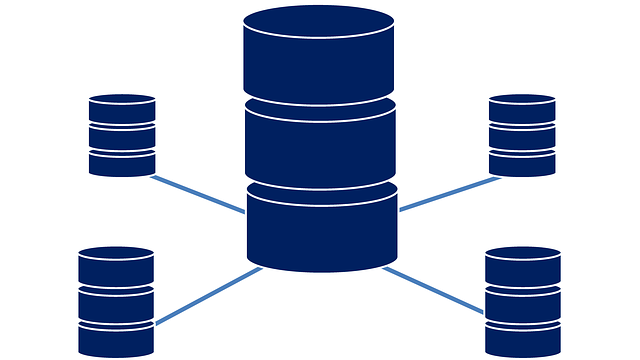Mongodb database
Mongodb is the Large volumes of unstructured or partially structured data may be handled with ease with the popular nosql database management system. It offers excellent performance, scalability, and flexibility. It is a type of document-oriented database, which implies that the way it organizes data is in flexible, JSON-like documents.

What is mongodb
An appreciated open-source nosql document-oriented database management system is mongodb. It belongs to the category of nosql databases, which indicates that it does not make use of the traditional relational database structure based on tables. Mongodb, on the other hand, stores data as versatile, JSON-like documents, making it appropriate for dealing with unstructured or partially organized data.
Mongodb database was created by mongodb Inc. And was originally made available in 2009. Because of its scalability, excellent performance, and flexibility in managing massive volumes of data, it has experienced substantial growth in popularity. Mongodb is made to grow horizontally across numerous servers or clusters as a distributed database.
Here are some of mongodb’s salient characteristics and features.
- Document-Oriented – The data is stored in mongo db in customizable documents that mimic the JSON (javascript Object Notation) format. These papers’ many structural options enable dynamic and changing data models. Fields inside the document can be indexed for effective querying, and each document is kept as a separate record in the database.
- Schemaless – Because mongo db lacks a schema, each document in a collection is allowed to have a different structure. Without rigid predetermined schemas, this flexibility enables simple change and adaption of data structures.
- CRUD actions – For dealing with data, mongo db supports all of the fundamental CRUD actions (Create, Read, Update, Delete). A collection of documents may be updated, deleted, and new ones added. Documents can also be retrieved using certain criteria.
- Querying – mongo db has a robust query language that enables you to obtain data in accordance with certain criteria and carry out complicated aggregations, sorting, and filtering. The query language has several powerful operators for interacting with data and is similar to JSON.
- Indexing – By building data structures that optimize data retrieval, indexing enhances query performance and is supported by mongo db. To speed up queries that use a particular field or expression, indexes can be made on certain fields or expressions.
- High Availability and Replication – mongo db provides replication, enabling you to make several copies of your data on other servers. In the event of a server failure, this guarantees high availability, data durability, and automated failover and recovery.
- Sharding – To horizontally scale data across several servers or clusters, mongo db offers sharding. Sharding enables greater speed and the management of huge databases by allowing you to segment data and spread it across other processors.
- Aggregation Framework – Within the database, you can carry out complicated data analysis and manipulation tasks thanks to mongodb’s aggregation framework. For the purposes of grouping, joining, converting, and evaluating data, it offers a number of operators and phases.
Web and mobile apps, content management systems, real-time analytics, iot (Internet of Things) applications, and more all make extensive use of mongo db. It is a popular option for managing a variety of data demands because of its adaptability, scalability, and developer-friendly capabilities.
Mongodb advantage and disadvantage
There are various benefits and drawbacks of mongodb. Let’s investigate them.
Advantages of mongodb.
- Scalable and customizable – mongodb’s document-oriented format supports dynamic and adaptable schemas, making it simple to meet evolving data needs. Additionally, it offers horizontal scalability via sharding, making it possible to distribute data effectively across a number of servers or clusters.
- High Performance – Read and write operations in mongo db are intended to be carried out quickly. It stores data in memory-mapped files, enabling quick access to frequently used information. Additionally, it assists in handling enormous datasets and heavy traffic loads because of its capacity to disperse data across multiple servers.
- Nosql Capabilities – mongo db offers flexibility in processing unstructured and semi-structured data because it is a nosql database. It is appropriate for a wide range of use cases since it supports a wide range of data types and intricate data structures.
- High Availability and Replication – mongo db provides replication, enabling you to make several copies of your data on other servers. In the event of a server failure, this allows for automated failover, fault tolerance, and data redundancy.
- Rich Query Language – The query language used by mongo db offers strong querying capabilities. It enables complex filtering, sorting, and aggregating procedures and supports a large range of operators.
- Dynamic Scaling – mongo db lets you add or remove servers from a cluster without affecting how the database is being used. This dynamic scaling capabilities enables smooth horizontal scalability as well as adaptation to shifting workloads.
Disadvantages of mongodb.
- Absence of ACID Transactions – For the sake of speed and scalability, mongo db forgoes some of the typical ACID (Atomicity, Consistency, Isolation, Durability) features. On a single document, it allows atomic operations, but it does not fully support ACID transactions that span a number of documents or collections.
- Complexity in Data Modeling – Although mongo db’s flexible schema might be useful, it can also make data modeling more difficult. Data consistency needs to be maintained at the application level in the absence of a set schema, which necessitates careful design and preparation.
- Memory Usage – When working with huge datasets, memory-mapped files in mongodb can use up a lot of memory. To maximize performance and prevent memory limitations, proper memory management and optimization are crucial.
- Indexing Overhead – For effective querying, mongo db largely relies on indexes. But keeping indexes updated takes up more disk space and slows down write operations. Indexes with poor design might affect storage needs and performance.
- Ecosystem Maturity – While mongo db has a developed core database, its drivers and tools may not be as developed or vast as those of more seasoned relational databases. However, mongodb’s ecosystem and community support are still expanding.
Prior to choosing to utilize mongodb or any other database system, it’s crucial to consider these benefits and drawbacks in light of your unique use case and requirements.
Best features of mangodb
The fact that mongodb has a number of features makes it a favorite among developers.
Some of mongodb’s standout characteristics are.
- Versatile Data Model – The document-oriented data model used by mongo db allows for versatile representation of complex and changing data structures. The schema-less feature of mongodb makes it simple to adapt changes in your data without having a specified schema since you may store documents with different structures inside the same collection.
- Great Performance and Scalability – mongo db is built for great performance and scalability. You may share data among several servers or clusters thanks to its capability for horizontal scalability. This makes it possible to scale smoothly as your data increases and helps to manage heavy traffic loads.
- Replication and High Availability – mongo db includes replication functionality that enables you to generate multiple copies (or replica sets) of your data on several servers. Replication provides high availability for your applications by ensuring data persistence, fault tolerance, and automated failover in the event of server failures.
- Querying and Indexing – mongo db offers a robust query language and indexing features. To enhance the performance of queries, you can construct indexes on particular fields or expressions. The query language is effective for retrieving and modifying data since it provides a large number of operators and enables for intricate filtering, sorting, and aggregating procedures.
- Ad Hoc Queries – Ad hoc querying is made possible by mongodb’s flexible document model and dynamic querying features. Greater development agility is possible since complicated queries may be executed without the need for a predetermined schema or explicit schema migrations.
- Aggregation architecture – Within the database, mongodb’s aggregation architecture enables sophisticated data analysis and manipulation. Data may be grouped, filtered, transformed, and analyzed using a variety of operators and stages provided by this system, offering sophisticated data processing capabilities without the need to transfer the data to external systems.
- Geospatial Capabilities – Geospatial data and queries are supported natively by mongo db. Its inclusion of multiple geospatial operators and indexes makes it ideal for applications that use spatial data or location-based services.
- Full-Text Search – You may conduct text-based searches across collections using mongodb’s full-text search capabilities. For effective and relevant search results, it provides language-specific stemming, text indexing, and strong search operators.
- Community and Ecosystem – mongo db has a huge and vibrant community that offers a wealth of information, support, and documentation. In addition, mongo db provides a wide range of official drivers and libraries for different programming languages, as well as third-party tools and interfaces with well-known frameworks.
The appeal of mongo db and its aptitude to manage a variety of data requirements in modern application development are both influenced by these qualities, among others.
Mongodb atlas
Mongodb Inc. Offers mongodb Atlas, a fully managed cloud database solution. It is intended to make cloud-based mongodb database deployment, scalability, and maintenance simpler. Without having to worry about maintaining the underlying infrastructure, mongodb Atlas enables you to concentrate on creating your apps.
Mongodb Atlas’ main advantages and features are as follows.
- Fully Managed – mongo db Atlas handles all aspects of managing databases, including provisioning, setup, configuration, patching, backups, and monitoring. By doing away with manual database management, you can concentrate on application development.
- Scalability and Performance – You can quickly scale your database using mongo db Atlas as your needs change. By adding extra nodes to your cluster, it gives you choices for horizontal scaling. Atlas also provides intelligent routing and automated load balancing to enhance performance.
- High Availability and Fault Tolerance – By duplicating your data over multiple nodes in various availability zones or regions, mongo db Atlas provides high availability. In the event of hardware or network problems, it offers automated failover and recovery.
- Security and Compliance – To safeguard your data, Atlas includes a number of security measures. It has IP whitelisting, authentication, and authorization checks, encryption both at rest and in transit, and auditing tools. Additionally, Atlas facilitates adherence to laws including GDPR, HIPAA, and SOC 2.
- Backup and disaster recovery – are both handled by mongo db Atlas, which offers automatic database backups with adjustable retention times. You may quickly execute on-demand backups or data restoration at any point in time. Additionally, it provides the option of replicating data to a backup location for disaster recovery.
- Cloud Provider Integration – mongo db Atlas has integrations with the top cloud service providers, including Amazon Web Services (AWS), Microsoft Azure, and Google Cloud Platform (GCP). By doing this, you may use the advantages of those platforms to deploy your mongo db databases with the cloud provider of your choosing.
- Monitoring and Performance improvement – To assist you in locating and resolving performance issues, Atlas includes built-in monitoring and performance improvement capabilities. To improve the performance of your database, it provides real-time performance measurements, query analysis, and performance adviser advice.
- Seamless Migration – The mongo db Atlas platform provides tools and services to make it easier to move current mongo db databases to it. You may simply transition your apps to Atlas without affecting operations because of its possibilities for live migration with no downtime.
Mongo db Atlas offers easy connection with the top cloud providers, comprehensive capabilities for scalability, high availability, security, and performance, and simplifies the management of mongo db databases. Developers and companies seeking a fully managed mongo db solution in the cloud should consider it.
Mongodb download
Using these instructions, you may download mongo db.
- Visit https://www.mongodb.com/try/download/community to see the official mongodb download page.
- You may choose from a number of alternatives for various operating systems on the download page. Depending on your operating system (Windows, macos, or Linux), pick the relevant version.
- Decide the mongodb version you wish to download. Both earlier versions and the most recent stable release of mongodb are available for download. Downloading the most recent stable release is advised unless you have a need to use an earlier version.
- To start the download, click the “Download” button next to the chosen version. The download of the file to your local computer will begin.
- Find the downloaded file on your computer when the download is finished. The file will be in a compressed format, such as.tgz for Linux/macos or.zip for Windows.
- Extract the compressed file’s contents to a specific location on your computer.
Mongodb compass
The official graphical user interface (GUI) program offered by mongodb Inc. Is called mongodb Compass. It is intended to make mongodb database construction and management simpler. You may run queries, examine data structures, manage databases, and graphically interact with your mongodb data with mongodb Compass.
Included among mongodb Compass’s key features are.
- Graphical Data Exploration – mongodb Compass offers a user-friendly interface for graphical data exploration of your mongodb data. An organized view of documents, groups, and databases makes it simple to browse to understand your data.
- Query Building – Compass provides a tool that lets you graphically create sophisticated mongodb queries. A drag-and-drop interface makes it easier to establish filters, sorting criteria, and projection fields, which streamlines the creation of queries.
- Aggregation Pipeline Builder – mongodb Compass comes with an aggregation pipeline builder that aids in the development and testing of complicated aggregation pipelines. You may create multiple phases, define field modifications, aggregate output, and execute grouping.
- Index Management – Compass offers a specific interface for controlling the indexes on your mongodb collections. You may optimize your searches based on index recommendations, check index usage data, create, change, and remove indexes, and more.
- Real-Time Data Visualization – Compass enables you to use charts and graphs to view your data in real time. To obtain insights into your data, you may construct visualizations based on query results, aggregate data, or sample documents.
- Tools for data validation and schema analysis – are available in Compass. By setting validation criteria, examining current data for consistency, and spotting schema trends, it aids in ensuring data integrity.
- Data Import and Export – Compass allows users to import data in a number of different formats, including JSON, CSV, and BSON. Data may be readily exported to external formats for backup or sharing or imported into your mongodb databases.
- User and Role Management – Within your mongodb deployment, Compass offers an interface for managing users and roles. You can set up authentication options, assign roles, and add, edit, and remove users.
For developers, database administrators, and data analysts, mongodb Compass provides a user-friendly and visual method to working with mongodb, making it simpler for them to interface with their databases. It offers a practical method to browse, query, and manage mongodb data and works in conjunction with command-line tools. The mongodb website offers a download for mongodb Compass, which works with local and remote servers hosting mongodb deployments.
Mongodb how to install
The procedures listed below can be used to install mongodb.
- Step 1 – Select the correct mongodb version.
Go to https://www.mongodb.com/try/download/community to see the mongodb download page.
Choose the mongodb version that is compatible with your operating system. The Community Server or Enterprise Server editions are your options.
- Step 2 – Download mongodb.
Next to the chosen version, click the “Download” button.
Installation file should be saved to your PC.
- Step 3 – Install mongodb.
Open the installation file that you downloaded.
Implement the wizard’s directions.
Read the licensing agreement, then agree to it.
Keep the default options or select the installation directory.
Choose the parts you wish to install (such as mongodb Compass and mongodb Server).
As required, adjust any other parameters.
Launch the installation procedure, then watch for it to finish.
- Step 4 – Configure mongodb.
Mongodb needs a data directory when the installation is finished so it may store its files there.
Make a directory to house the data that mongodb will store. You may, for instance, create a folder called “data” in the root of your system disk (for instance, C:\data), or in any other place you choose.
- Step 5 – Launch mongodb
Start a command prompt or terminal.
Go to the installation location for mongodb.
Start the mongodb server by using the mongod command.
You might need to give the mongod command the whole path if the system’s PATH variable does not already include the mongodb bin directory.
- Step 6 – Verify the mongodb Installation.
Open another command window or terminal.
Go to the installation location for mongodb.
Start the mongodb shell by using the mongo command.
Again, specify the whole path to the mongo command if the mongodb bin directory has not been added to the system’s PATH variable.
You should see the mongodb shell prompt, indicating that you are connected to a mongodb instance, if the installation and configuration were successful.
Python mongodb
Install the pymongo package, which is the official mongodb driver for Python, in order to work with mongodb in Python. Here is a guide on integrating Python with mongodb.
Step 1- Install pymongo
Open a terminal or command prompt.
Run the following command to install pymongo using pip (Python package installer).
Pip install pymongo
Mongodb compass download
The official mongodb GUI, mongodb Compass, may be downloaded by following these instructions.
- Step 1 – Visit the mongodb Download Center.
Go to https://www.mongodb.com/try/download/compass, the website of the mongodb Download Center.
- Step 2 – Choose the Version.
You should be able to download several mongodb Compass versions.
Select the Windows, macos, or Linux version that is compatible with your operating system.
Based on your needs, choose either the Community or the Enterprise edition.
- Step 3 – Download mongodb Compass.
Next to the chosen version, click the “Download” button.
Installation file should be saved to your PC.
- Step 4 – Install mongodb Compass.
Open the installation file that you downloaded.
Implement the wizard’s directions.
Read the licensing agreement, then agree to it.
Keep the default options or select the installation directory.
As required, adjust any other parameters.
Launch the installation procedure, then watch for it to finish.
- Step 5 – Start mongodb Compass.
Launch mongodb Compass after the installation is complete.
On your desktop, either the Start menu of Windows or the Applications folder of Mac, look for the mongodb Compass icon.
Click the symbol twice to launch mongodb Compass.
Mongodb databases
Databases in mongo db serve as storage spaces for document collections. Each database exists in isolation and keeps its data files on disk. Multiple databases can be created on a mongodb server.
These are some important details concerning mongodb databases.
- Default Database – The “admin” database that comes with mongodb by default is used for administrative activities. It includes details on system configuration, user authentication, and other administrative tasks. There is also a “local” database that holds local data in addition to replication data.
- Creating Databases – To create a new database, use the get_database method in the pymongo driver or the use command in the mongodb shell. An instance would be the mongodb shell.
Use mydatabase
Mongodb document
A document is the fundamental data storage unit in mongo db. It is comparable to a relational database’s row or record. A document is represented as a field-value pair-based object that resembles a JSON object.
These important features of mongodb documents are listed.
- Composition – In mongo db, a document is a hierarchical structure with nested fields. It resembles a JSON object and may store values in a variety of data types, such as texts, integers, arrays, sub-documents, and others. A document that represents a user, for instance, may have the fields “name,” “age,” and “address,” each of which has the relevant value.
- Fields – The keys in key-value pairs make up the fields that make up a document. A document’s fields are distinct from one another and are case-sensitive. A non-empty field name is required for each field in a document. Alphanumeric strings can begin with a letter or an underscore (_) in field names. Additionally, they can include dots (.) To signify nested fields.
- Values – Field values in a document may be of any of the mongo db data types that the database supports, including texts, integers, booleans, arrays, dates, and even nested documents. Each value may be viewed, changed, or updated separately.
- ID Field (_id) – mongodb gives each document a special identification known as the “_id” field. It ensures the document’s uniqueness inside a collection and acts as the primary key for the document. When inserting a document, mongodb automatically creates a unique identification if you don’t specify a “_id” value.
- Flexible Schema – The schema of mongodb documents is flexible. It implies that diverse structures can exist among documents in a collection. There is no hard need that documents adhere to a predetermined schema or contain the same fields. This adaptability makes it simple to evolve data models.
- CRUD Operations – Documents can be created, read, updated, and deleted using mongodb. You may add new documents to collections, retrieve documents using various query criteria, alter already-existing documents, and remove documents entirely.
- BSON Format – mongodb internally uses the binary-encoded BSON (Binary JSON) format for document storage and transmission. For effective storage and retrieval, BSON enhances the JSON paradigm with new data kinds and functionalities.
Documents are kept in collections in mongodb, which are comparable to tables in relational databases. Collections organize similar materials according to their goal or schema.
Mongodb cloud
In order to install, maintain, and grow mongodb databases in the cloud, customers can use mongodb Inc.’s cloud-based products, which are referred to as mongodb Cloud. Two main cloud services from mongodb are available.
- Mongodb Atlas – A fully managed cloud database solution for mongodb, mongodb Atlas. On widely recognized cloud computing infrastructures like Amazon Web Services (AWS), Google Cloud Platform (GCP), and Microsoft Azure, it offers an easy and scalable method for deploying, managing, and securing mongodb databases. Developers can concentrate on creating their apps while mongodb Atlas takes care of the underlying infrastructure, including server provisioning, database setup, backups, monitoring, and automated scalability.
Mongodb atlas login
Follow these instructions to log into mongodb Atlas.
- Go to https://www.mongodb.com/cloud/atlas to the mongodb Atlas website.
- In the upper right corner of the website, click the “Sign In” button.
- Fill out the boxes using your email address and password if you already have a mongodb account. Click the “Sign In” button after that.
- To create a new mongodb account if you don’t already have one, click the “Create Account” button and follow the instructions. You must enter the needed information, including your email address and password.
- When you successfully log in, the mongodb Atlas dashboard will be delivered to you, where you may manage your databases, clusters, and other resources.
Keep in mind that your login procedure may vary somewhat if your company utilizes mongodb Atlas. You might be asked to choose your organization and provide further information.


































































































































































